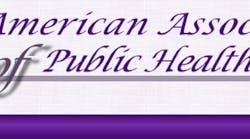The American Association of Public Health Dentistry (AAPHD) is committed to 1) Promotion of effective efforts in disease prevention, health promotion and service delivery; 2) Education of the public, health professionals and decision-makers regarding the importance of oral health to total well-being; and 3) Expansion of the knowledge base of dental public health and fostering competency in its practice. In accordance with these goals, we offer the following summary and analysis of the recent systematic review published in JADA, “A Systematic Review of Oral Health Outcomes Produced By Dental Teams Incorporating Midlevel Providers” (1).
This study was designed and commissioned by the ADA’s House of Delegate to address the following specific question: “In populations where non-dentists conduct diagnostic, treatment planning, and/or irreversible/surgical dental procedures, is there a change in disease increment, untreated dental disease, and/or cost-effectiveness of dental care?”
RELATED: AAPHD responds to ADA report on study of alternative dental providers
RELATED: Dental therapists and their critics
RELATED: The ADA's recent report on the efficacy of dental therapists to be interpreted accordingly
Based upon a thorough review of existing literature, this study (1) has four major conclusions:
- The quality of the evidence was poor.
- In select groups that received irreversible dental treatment by teams that included midlevel providers, caries increment and severity decreased across time. However, there was no difference in caries increment and severity compared with those in populations in which dentists provided all irreversible treatment.
- In select groups that received irreversible dental treatment by teams that included midlevel providers, untreated caries decreased across time and untreated caries decreased compared with that in populations in which dentists provided all treatment.
- No data were found in the following domains: diseases other than caries for which midlevel providers performed irreversible procedures; outcomes of interest for midlevel providers performing irreversible diagnostic procedures such as excisional biopsies for oral cancer; and cost effectiveness, defined as the real cost of reducing disease burden, of midlevel providers.
Conclusions 2 to 4 directly answer the question commissioned by the HOD: Therapists are no different than dentists with regard to their impact on disease increment; in populations served by teams that include therapists there is less untreated disease; and sufficient evidence to address cost-effectiveness of therapists utilization is lacking. These conclusions unfortunately were not well represented in ADA’s press release (eMemo, from Jan. 2, 2013) accompanying the publication of the results in JADA. The ADA chose to focus only on conclusion number 2, the inability of therapists to decrease caries increment when compared to populations using dentists only. This finding demonstrates that therapists and dentists are equally effective in this regard, which is not surprising. Given that therapists, within their scope of practice, provide similar services as dentists (e.g., reactive treatment of existing disease and individual level health promotion and prevention), there is little reason to presume that they would have a greater or lesser influence on disease increment than would be found among populations treated by dentists only. The benefit therapists offer is not to provide unique or novel treatment not provided by dentists, rather it is to provide the same treatments offered by dentists at lower costs and to populations that have both high needs and poor access to care. Thus, widespread use of therapists lead predictably to just what the study showed, i.e., there was less untreated caries in populations served by oral health teams that included therapists than in populations served only by dentists. Thus the most important finding of this study is that in populations benefiting from the widespread use of therapists both access to care and oral health outcomes are improved. This is something that should be welcomed by any health care community concerned with patient (and population) health.
AAPHD is proud that members and leadership of our organization were called upon to contribute as authors and reviewers to this study. It was a challenging undertaking and AAPHD is confident that the best possible scientific approach was applied, thanks to the rigor of the process, the excellent ADA staff, and the dedication of our dental public health researchers to science and evidence-based practice.
AAPHD believes that despite its inherent limitations, this study has significant findings that show promise of mid-level providers in improving access and oral health outcomes. In addition, this study’s primary finding of overall poor evidence on the topic further supports the need for funding for demonstration projects as outlined in the Affordable Care Act aimed at determining optimal approaches for deploying new workforce models. While access to individual preventive and restorative dental care is not the total solution, improving access to care for those in need is an essential component of an effective delivery system in partnership with education and prevention to improve oral health literacy, and evidence based dental public health measures (e.g. fluoridation and school sealant programs) to improve the oral health of the American public.
References:
- Wright JT, et al., A systematic review of oral health outcomes produced by dental teams incorporating midlevel providers. The Journal of the American Dental Association January 1, 2013 vol. 144 no. 1 75-91.
About the American Association Of Public Health Dentistry
Founded in 1937, the American Association of Public Health Dentistry (AAPHD) provides a focus for meeting the challenge to improve oral health. AAPHD membership is open to all individuals concerned with improving the oral health of the public. Its broad base of membership provides a fertile environment and numerous opportunities for the exchange of ideas and experiences. During the past decade, many enthusiastic persons have joined AAPHD, increasing its influence and effectiveness. Improvements in the oral health of the U.S. population have been much heralded in recent years. However, these gains have eluded many of the most vulnerable people - those for whom public health personnel often have special concern - in the U.S. and other countries. For such individuals, living with oral pain and disfigurement means a lack of health that interferes with the opportunity to learn and obtain meaningful employment.






